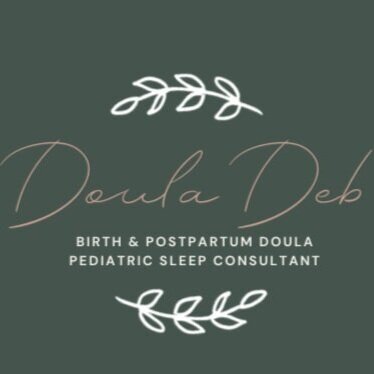Holistic Approaches to Postpartum Recovery: Blending Traditional and Modern Practices
Listen to the Podcast!
Postpartum recovery is not just about “bouncing back”—let’s go ahead and throw that entire idea in the trash where it belongs. The truth is, healing after birth takes time, support, and intentional care. And if there’s one thing I’ve learned from working with families from all kinds of backgrounds, it’s this:
💡 Cultures that prioritize postpartum care do it better.
Through my years of studying postpartum traditions around the world, I’ve seen that the families who thrive after birth are the ones who have a plan in place—a mix of time-tested wisdom and modern resources that actually support healing. So today, we’re talking about how to blend traditional and modern postpartum recovery strategies to create the perfect plan for you.
Nutrition: Feed Yourself Like You Matter (Because You Do!)
One of the biggest mistakes I see new parents make? Forgetting to eat real food.
Traditional postpartum care makes nourishing meals a priority. Many cultures emphasize warm, healing foods:
🌿 Long-simmered broths (hello, gut health and collagen for tissue repair!)
🍲 Stews and soups packed with easy-to-digest nutrients
🌾 Warming drinks like atole (a corn-based drink from Latin America) or golden milk (an anti-inflammatory turmeric-based drink)
Meanwhile, modern nutrition brings in even more options—superfoods like quinoa, chia seeds, and leafy greens help replenish essential vitamins and minerals after birth.
How to blend both?
Prep freezer meals with broths and stews so you have easy, nourishing food ready to go.
Use modern tools like meal delivery services or my Postpartum Meal Planner and Guide (because planning meals while sleep-deprived is not the move).
Keep high-protein snacks within reach so you don’t end up running on half a granola bar and cold coffee.
💡 Bottom line: Your body just built a human—feed it like it matters.
Movement: Gentle, Not Gym Bro
Let me be very clear: Postpartum recovery is not the time for intense workouts or “bouncing back.” You didn’t just run a marathon—you grew and birthed a human. Your body needs gentle, supportive movement to heal.
Traditional cultures often use belly binding for core support—this practice has been around for centuries in places like Malaysia, Japan, and Mexico. It’s not about squeezing yourself smaller; it’s about giving your abdominal muscles gentle support while they heal.
Modern postpartum care brings us pelvic floor therapy, which is a game-changer for long-term recovery. If you’re dealing with back pain, pressure, or any sort of “oops, I peed a little when I sneezed” situation—it’s time to see a pelvic floor therapist.
How to blend both?
Try belly binding for support (just make sure you’re doing it safely—talk to a postpartum expert first!).
Start with gentle movement like walking or stretching—not an intense fitness program.
Look into pelvic floor therapy (seriously, even if you feel fine now, future you will thank you).
💡 Bottom line: Move when and how your body feels ready—but support it along the way.
Mental Health: Because Mood Swings Are a Thing
Postpartum isn’t just about physical healing—it’s an emotional rollercoaster, too. Your hormones are wild, your identity is shifting, and sleep deprivation is very real.
Traditional postpartum care recognizes this. Many cultures build in a designated rest period (anywhere from 21 to 40 days!) where the new parent is surrounded by support. They’re expected to rest, bond with their baby, and not be doing dishes or entertaining guests.
Meanwhile, modern postpartum care gives us therapy, support groups, and mindfulness techniques to help navigate those huge emotional shifts.
How to blend both?
Protect your recovery time—let people help you. Say yes to meal drop-offs, laundry help, and someone holding the baby while you nap.
Have a mental health check-in plan—who’s looking out for you? Your partner? A friend? A therapist?
Join a support group—whether it’s an in-person new parent meetup or a virtual community, you need people who get it.
💡 Bottom line: You’re not just healing physically—you’re healing emotionally. Get support.
Blending It All Together: Your Postpartum A-Team
The biggest lesson I’ve learned from studying global postpartum traditions? You don’t have to do this alone.
Postpartum recovery is not a solo sport—you need a support system in place. So let’s set you up for success:
✔ Lean on family and friends—If they ask, “How can I help?” Give them an actual task.
✔ Hire professional support—Postpartum doulas (hi, that’s me!) exist for a reason.
✔ Find your village—If you don’t have built-in community, join a virtual one!
💡 Bottom line: Postpartum recovery isn’t something you “figure out as you go.” Plan for it before baby arrives.
Need More Support? Let’s Make It Happen!
If you’re sitting there thinking, Okay Deb, but HOW do I actually do this?—I got you.
👉 Need help planning meals that actually support postpartum recovery? Grab my Postpartum Meal Planner and Guide!
👉 Want ongoing expert support as you navigate the first year? Check out my First Year Support Program—it’s virtual, flexible, and designed to help you build your village and get expert guidance when you need it.
👉 Feeling overwhelmed and need a solid plan for postpartum recovery? Book a prenatal consult with me! We’ll map out a recovery plan that actually works for you.
✨ You don’t have to do this alone. Let’s build your postpartum plan together.
📩 Ready to get started? Reach out today!

